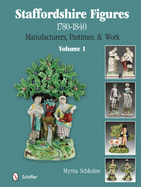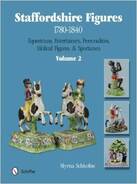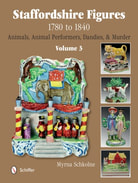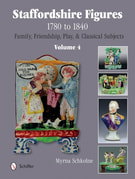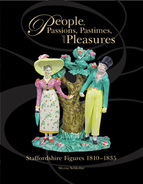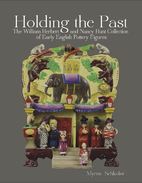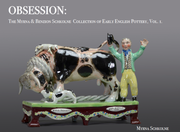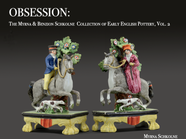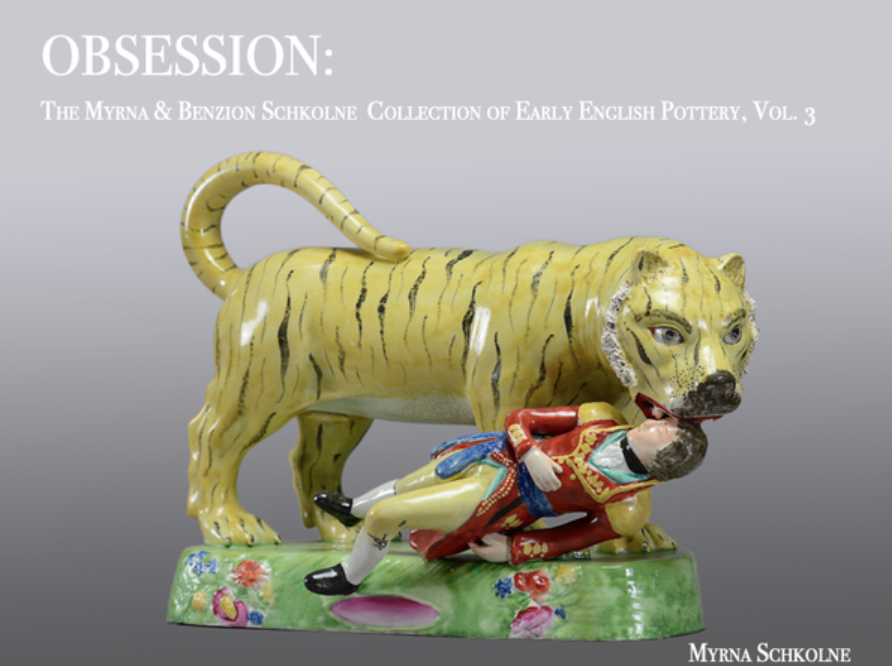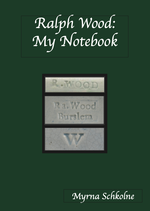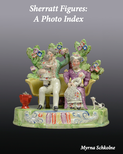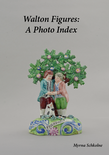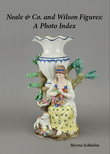Below is one of the most dramatic, impressive Staffordshire figures....yet the name of the figure is clouded in uncertainty. Is it symbolic of Eloquence? Is it St. Paul preaching? Or could it represent the Greek orator Demosthenes?
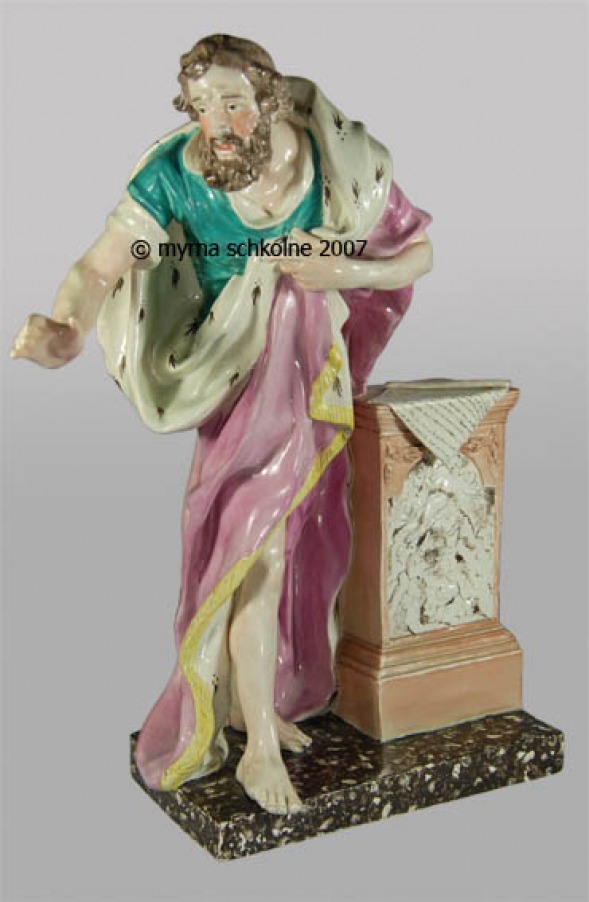
Pearlware figure sometimes described as St. Paul Preaching in Athens, sometimes as Eloquence and sometimes as the Greek orator Demosthenes. Made by Enoch Wood circa 1785. H: 19". From the current stock of Elinor Penna at www.elinorpenna.com.
Although the figure is sometimes dubbed St. Paul Preaching in Athens, there is no basis for this naming. No marble or other design source exists linking this beautiful pearlware figure to St. Paul. And as someone else has pointed out (I think Ms. Manheim in her book on the Hope McCormick Collection), St. Paul was stocky, and our imposing orator is anything but stocky.
Similarly, there is no basis for dubbing this figure Eloquence. Show me a classical representation of Eloquence looking thus and I will recant...but at this point, Eloquence it is not.
So that leaves Demosthenes. Demosthenes (385 - 322 BCE) was ancient Greece's greatest orator. In an attempt to overcome his stuttering, he practiced with pebbles in his mouth. And to improve his vocal projection, he addressed the roaring ocean. Note the relief frieze on the plinth next to Demosthenes. Although not clear in this photo, it definitely shows a figure speaking to the waves--trust me! So who else can this be but Demosthenes? This frieze is the hidden clue to the figure's identity.
BTW, examples of this figure marked E. WOOD are recorded, indicating a date of manufacture of between November 1783 and 1790 (when that great potter Enoch Wood potted solo). Possibly this figure dates from around that time. Or possibly, Enoch Wood took the molds with him into his new partnership with James Caldwell, which lasted from 1791 to 1818. Anyway you look at it, this is an extraordinary and early pearlware figure. Possible design sources (see Julia Poole's Plagiarism Personified, page 25) include a plaster by John Cheere (d. 1787) or a statue by Charles Harris (d. 1795).

